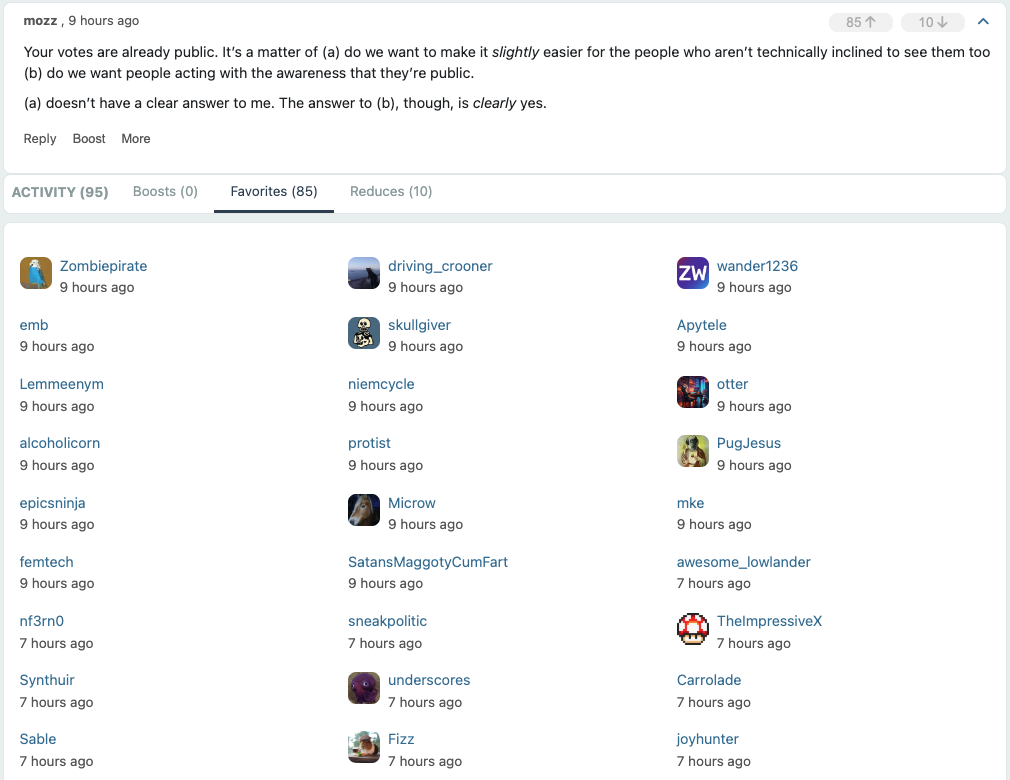

All votes are public, they’re literally broadcast to the Fediverse writ large. You vote on something on your server, your server then tells the server owning the thing you voted on and that server then tells anyone who is interested (subscribers on other servers). That way everyone knows that this comment was voted on, but that information is indelibly tied to you - an entity on the Fediverse.
Lemmy devs just chose not to a) show that information in a UI (plenty of other software out there does) and b) not inform people that was the case. Which leads to the whole point of the thread, hiding this from users merely gives a false sense of security.















Hugo can be as simple as installing it, configuring a site with some yaml that points at a really available theme and writing your markdown content.
It gets admittedly more complex if you’re wanting to write your own theme though.
But I think this realistically applies to most all static site generators.